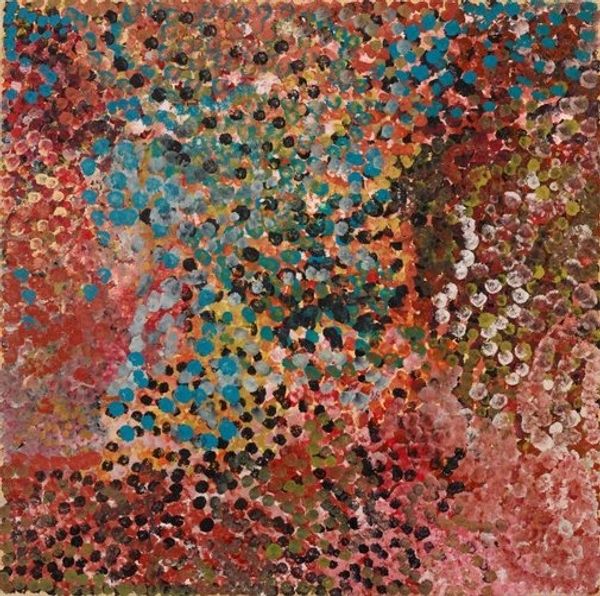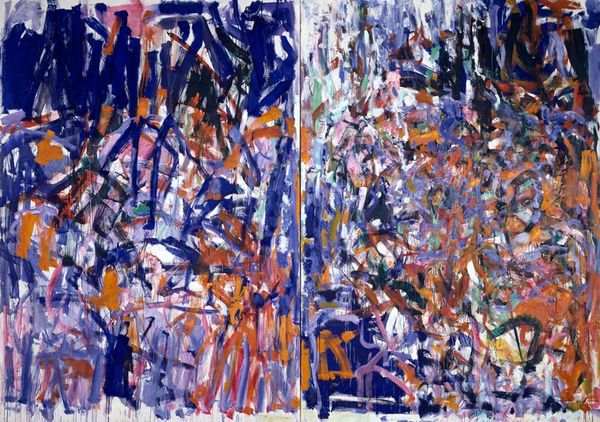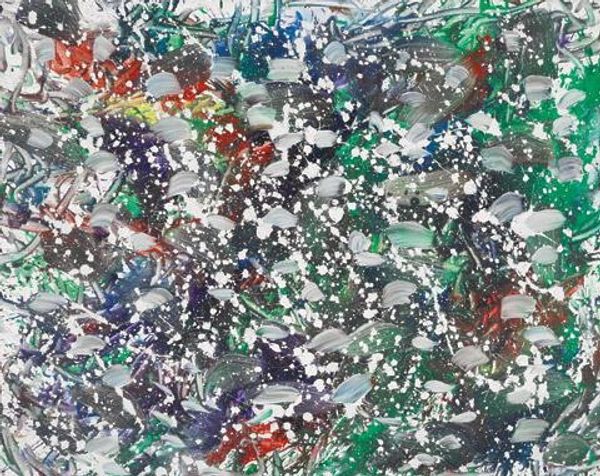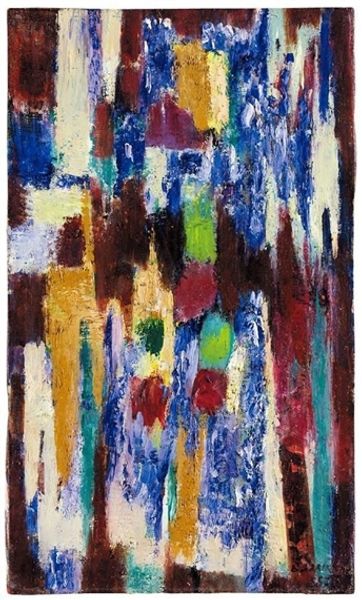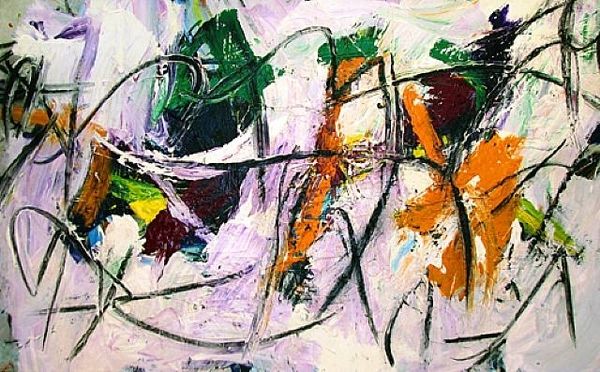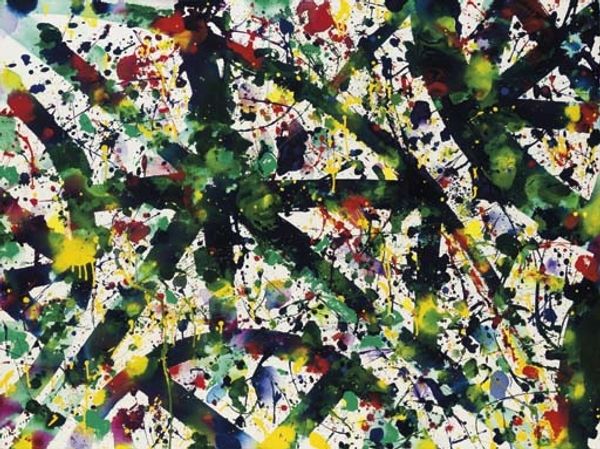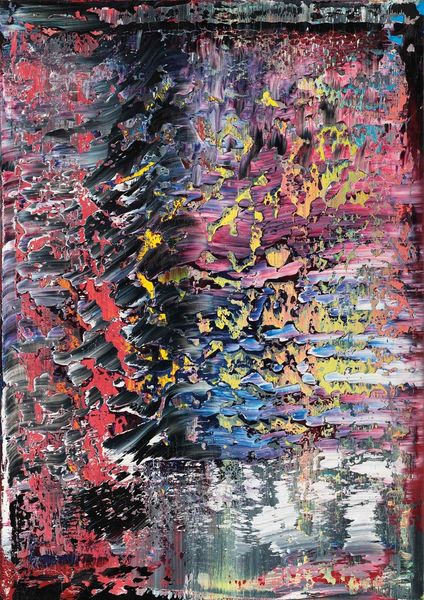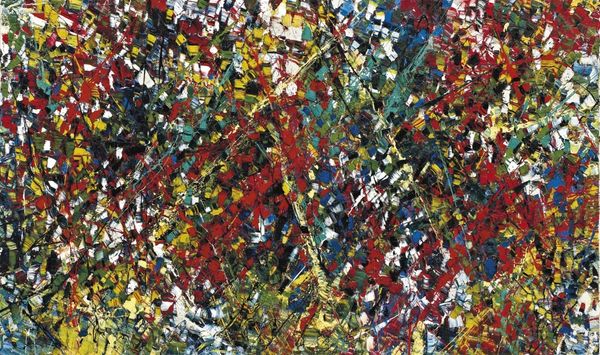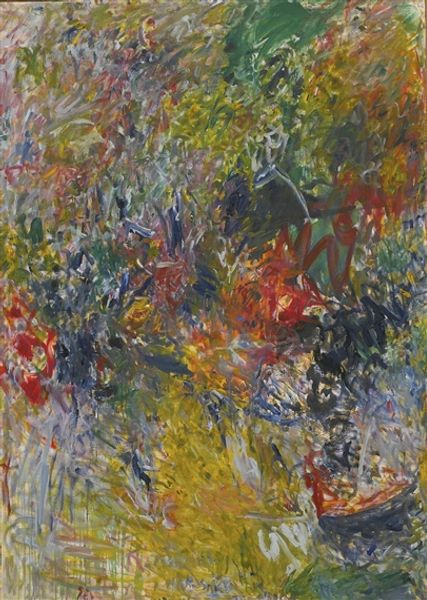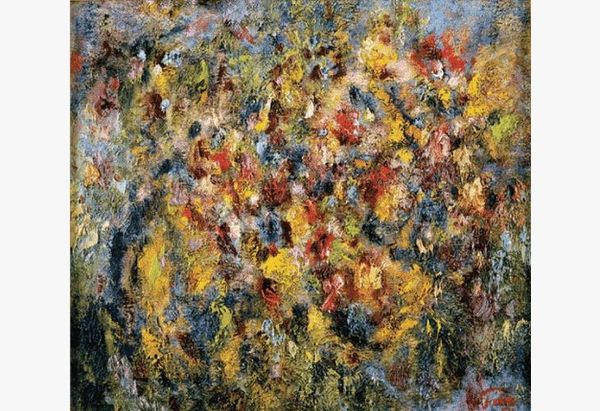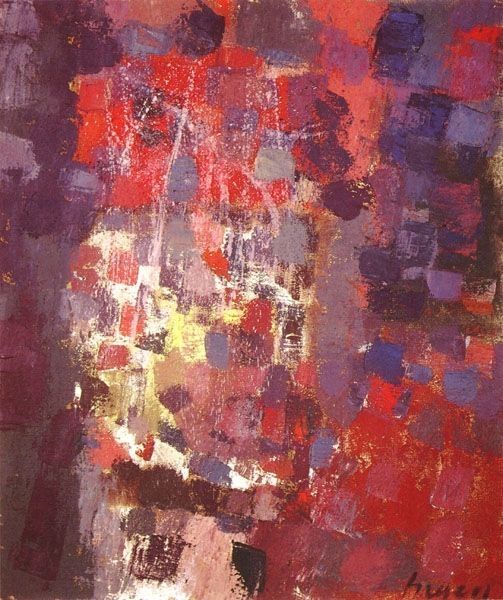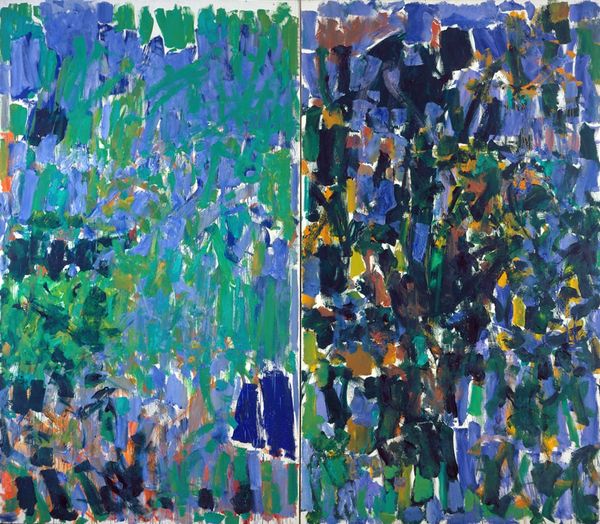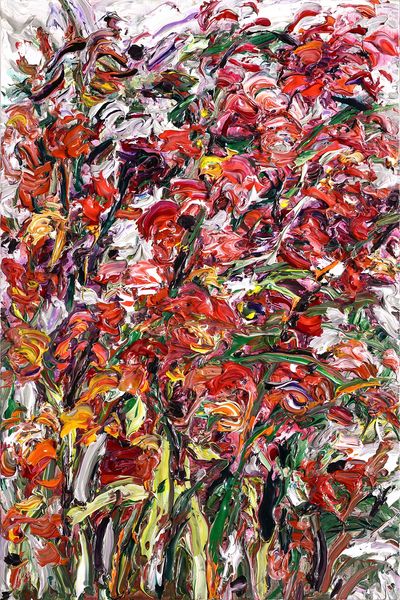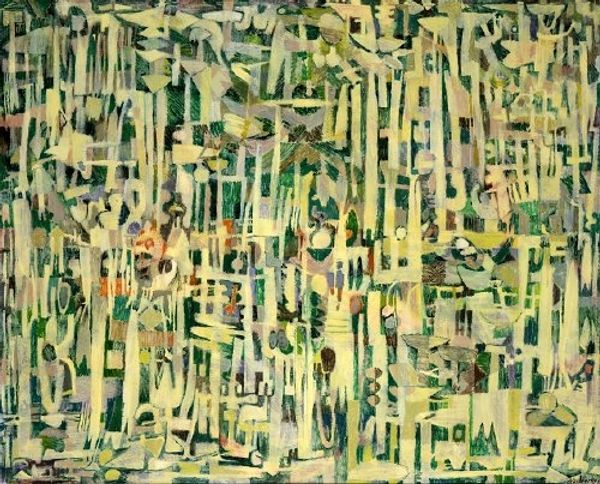
acrylic-paint
#
abstract-expressionism
#
abstract expressionism
#
landscape
#
acrylic-paint
#
abstraction
#
abstract art
Copyright: Jean-Paul Riopelle,Fair Use
Curator: Jean-Paul Riopelle's “Pavane,” created in 1954, greets us here today at the National Gallery of Canada. A stunning example of abstract expressionism, using acrylic paint to build this composition. Editor: My initial impression is one of intense energy, yet contained. Like an explosion frozen in time, perhaps a controlled burn even? There's such defined structure amidst the apparent chaos. Curator: Riopelle’s application, the way he uses those palette knives—repeated strokes layered to achieve that mosaic effect—it’s pure formalism. It's a beautiful display of gestural abstraction. One can sense the artist's physicality through it. Editor: And this was painted during a very specific moment in Canadian art history. The Automatistes, of which Riopelle was a prominent member, were challenging academic conventions, seeking a visual language liberated from traditional constraints, so, the overall historical context highlights a bold move against the established order. Curator: Precisely, one can read those repetitive marks, their direction and weight, through the lens of semiotics as signs, reflecting an interiority that transcends objective representation. What narrative do the colours tell? Editor: The vibrant palette evokes post-war optimism but tinged with a sense of underlying instability and threat of uncertainty - Cold War anxiety perhaps seeping into abstract expression. Considering its role within the trajectory of Abstract Expressionism gives the viewer new insight into the art world. Curator: The work embodies the philosophy of its era. The all-over composition challenges the conventional figure-ground relationship—a concept central to abstract painting, no part dominates the eye, which democratizes space, inviting us to wander the pictorial field without fixed entry or exit points. Editor: These artists were often celebrated for their supposedly apolitical stance, but it is never completely neutral. Remember the financial incentive was a way to assert American cultural dominance during the Cold War era through international art exhibitions. How do you think “Pavane” stood within that scene? Curator: It’s difficult to assert definitively the artist's explicit intent or place on such broad narratives. But to fully engage it’s a work of sophisticated compositional logic. Riopelle’s visual strategy engages his painting within larger formal parameters beyond its historical backdrop, thus shaping the nature of visual discourse at the time and after. Editor: Perhaps understanding both the abstract nature and the socio-political conditions are vital for engaging “Pavane”. Thank you for that, it gave a deeper reading than first impressions! Curator: And likewise; art is ever enhanced in discussion.
Comments
No comments
Be the first to comment and join the conversation on the ultimate creative platform.
